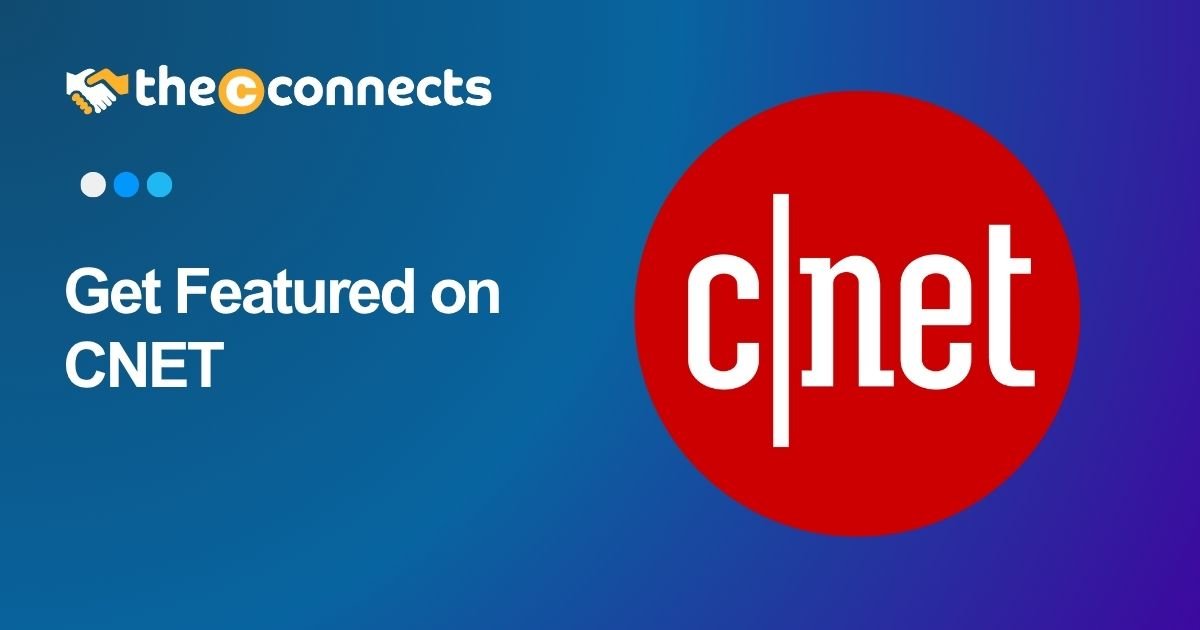Getting featured on CNET, one of the world’s most respected technology news and reviews hubs, is a golden opportunity to showcase your company’s innovations, thought leadership, and product breakthroughs to millions of tech‐savvy readers. For entrepreneurs, business leaders, and C‑Suite professionals, a CNET feature elevates brand credibility, opens doors to new partnerships, and can drive exponential market reach. At TheCconnects Magazine, we combine analyst‐level insights, media‐production expertise, and deep industry publishing connections to help you craft and place compelling stories that catch the eye of top editors at CNET. Here’s a comprehensive, step‐by‐step guide to getting your business featured on CNET, and how TheCconnects can make it happen for you.
1. Understand Why CNET Matters
- Massive Reach & Authority: CNET attracts over 100 million unique visitors per month, spanning technology enthusiasts, early adopters, corporate decision‑makers, and industry influencers. A feature here instantly signals trust and innovation.
- SEO Power: CNET ranks prominently for high‑value keywords like “best smartphones,” “tech reviews,” and “product launches.” A backlink or mention on CNET can significantly boost your own search rankings for targeted terms such as “Get Featured on CNET.”
- Thought‐Leadership Platform: Beyond product reviews, CNET publishes in‑depth interviews, trend analyses, and expert op‑eds, ideal for positioning your executives as forward‑thinking industry voices.
2. Know CNET’s Content Types
Before pitching, identify which CNET format aligns with your story:
- News Briefs: Timely announcements about product launches, partnerships, or funding rounds. Short (200–300 words), fast‑turnaround.
- In‑Depth Reviews: Hands‑on evaluations of gadgets, software, and enterprise solutions. Requires product samples and clear competitive differentiators.
- Feature Stories & Interviews: Long‑form articles exploring trends, case studies, or executive insights. Ideal for visionary leaders.
- Op‑Eds & Expert Columns: Opinion pieces on emerging tech themes, regulatory changes, or market forecasts, typically 800–1,200 words.
3. Crafting a Newsworthy Angle
CNET editors receive hundreds of pitches daily. Yours must stand out with:
- Timeliness: Tie your announcement to industry events (e.g., CES, MWC), regulatory shifts, or seasonal trends.
- Uniqueness: Highlight proprietary technology, groundbreaking research, or a first‑of‑its‑kind partnership.
- Impact: Quantify how your innovation solves real business challenges, reduces costs, or scales operations.
- Human Interest: Profiles of founders overcoming obstacles or case studies showing real ROI resonate with readers.
4. Build a Professional Media Kit
A polished media kit conveys professionalism and makes it easier for editors to craft the story. Include:
- Executive Bios: Concise profiles with high‑resolution headshots, highlighting your credentials and domain expertise.
- Product Assets: High‑quality images, demo videos, and technical specifications.
- Press Release: Well‑structured, AP‑style release with a compelling headline, subheadline, clear dateline, and boilerplate.
- Supporting Data: Market research, survey results, or customer testimonials that validate your claims.
5. Identify & Research the Right Editors
Rather than a generic “hello,” address pitches to editors who cover your niche:
- Bybeat Reporters: Focus on breaking news. See CNET’s News Team.
- Review Editors: Handle product test drives.
- Feature Writers: Craft long‑form content on emerging trends.
Use LinkedIn, author bios on CNET articles, and Twitter to find names and recent stories they’ve covered. Tailor each pitch to their interests and writing style.
6. Write a Standout Pitch Email
A concise, compelling email is your foot in the door. Structure it like this:
- Subject Line: “StudioX Launches AI‐Powered Drone for Infrastructure Inspection, Ready for Review?”
- Opening: One‑sentence hook: “Our AI‐driven drone slashed inspection times by 70% at XYZ Energy’s plants.”
- Body:
- Brief company introduction (one line).
- Key news angle (one paragraph).
- Supporting data and why it matters to CNET’s audience (one paragraph).
- Product availability (samples, demos) and embargo details (if any).
- Closing: Invitation to follow up, with clear contact info and links to your media kit.
7. Follow Up Strategically
If you haven’t heard back in 5–7 business days:
- Send a Polite Reminder: Reference your original email, add any new updates or milestones.
- Avoid Spam: No more than two follow‑ups. If still no response, pivot to another editor or channel.
8. Leverage TheCconnects’ Expertise
While pitching directly can work, navigating CNET’s editorial processes optimally often requires industry relationships and insider understanding. Here’s how TheCconnects adds value:
- Analyst Insights: We help you refine your story angle with data‑driven market analysis, ensuring your pitch hits the right news cycle.
- Media‑Production Services: From shooting professional video demos to creating interactive infographics, we supply eye‑catching assets that editors love.
- Publishing Network: Our established partnerships with top tech journalists and PR agencies open doors for bylined contributions, co‑authored features, and interview slots.
- Personalized Outreach: We draft and dispatch highly targeted pitches to the most relevant CNET writers, track engagement, and optimize based on real‑time feedback.
9. Optimize for SEO & Social Amplification
Once your feature goes live, amplify its impact:
- On‐Page SEO: Ensure your website article referencing the CNET feature includes keywords like “Featured on CNET,” “CNET review,” and your product name in headings, meta descriptions, and alt text.
- Backlinks: Link back from your own blog or newsroom to the CNET article to strengthen your domain authority.
- Social Media: Share the link across LinkedIn (tagging the author), Twitter (using relevant hashtags like #CNET, #TechNews), and your corporate channels.
- Email Newsletter: Highlight the feature in your next subscriber blast, with a brief excerpt and link to read more.
10. Measure & Iterate
Track key metrics to understand the ROI of your CNET feature:
- Referral Traffic: Monitor unique visitors from CNET links.
- Lead Generation: Count demo requests or sign‑ups tied to the article’s publication date.
- Social Engagement: Likes, shares, and comments on social posts promoting the feature.
- Media ROI: Compare time and budget invested versus the business impact (e.g., deals closed, partnerships formed).
Use these insights to refine future pitches, choose the next story angle, and deepen your relationship with top tech media.
Ready to Get Featured on CNET?
Partner with TheCconnects Magazine to craft your path to CNET coverage. Whether you’re launching a breakthrough product, sharing visionary insights, or seeking expert validation, our full‐service media and publishing team has you covered.
- Submit Your Details: Send us a brief overview of your news angle, product assets, and executive bios.
- Tailored Strategy: We’ll design a customized editorial and PR plan to secure your feature on CNET.
- End‑to‑End Support: From content creation to outreach, we handle every step, so you can focus on what you do best.
Contact us today for immediate support:
✉️ contact@thecconnects.com
📞 +91 91331 10730
💬 WhatsApp: https://wa.me/919133110730
Take the first step toward amplifying your brand on one of the world’s leading tech platforms. With TheCconnects by your side, getting featured on CNET is not just a possibility, it’s a guarantee.



